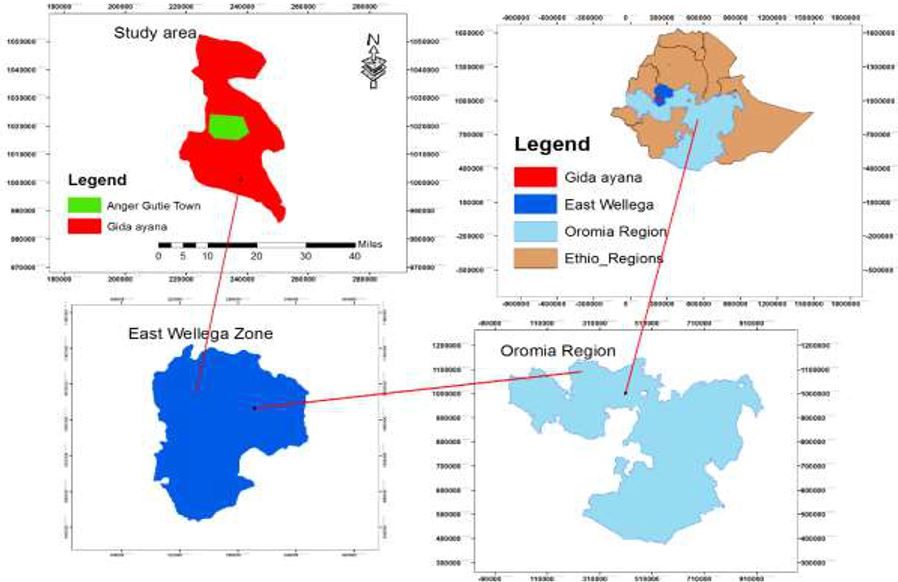Samples had also been collected from (S1 = spring water, S2 = collection chamber, S3 = reservoir, S4 = tanker, residences and hotels). The samples water were stored temporarily in packed ice cooler and transported.
Chemicals and Reagents
Methyl orange indicator, CaCO3, sodium hydroxide, anhydrous sodium carbonate, 50% silver sulfate, buffer solution, distilled water, H2SO4, Na2SO4, silver nitrate, potassium chromate, KCl, EDTA Solution, Ascorbic acid, sulfuric acid reagent calcium and magnesium indicator solution and phosphate reagent. Fresh reagents are used at all times and care great has chemical taken to avoid contamination. All of the compounds that were employed were of extremely great clarity and logical grade.
Examination of a sample
The current research was done in an experimental setting method. The physical parameters conductivity pH, Dissolved oxygen (DO), and Electrical Turbidity, by instruments listed in Total dissolved solids (TDS) Table 1 was been determined.
Table 1: Methods used to determine physico–chemical properties parameter
| S/N | Parameters | Methods |
|---|
| 1 | Turbidity | Nephelometric method |
| 2 | pH | pH Method |
| 3 | Temperature | Temperature meter |
| 4 | Dissolved Oxygen (DO) | HRDO Method |
| 5 | Total dissolved solids (TDS) | Conductivity/TDS Method |
| 6 | Electrical conductivity (EC) | Conductivity Method |
| 7 | Aluminum (Al3+) | Aluminon Method |
| 8 | Chromium (Cr6+) | 1,5-Diphenylcarbohydrazide Method |
| 9 | Total suspended solids (TSS) | Filtration method |
| 10 | Manganese (Mn) | Periodate Oxidation Method |
| 11 | Iron (Fe) | FerroVer® Method |
| 12 | Copper (Cu) | Bicinchoninate Method |
| 13 | Potassium (K) | Tetraphenyl borate Method |
| 14 | Nitrite-Nitrogen (NO2‾–N) | Diazotization Method |
| 15 | Phosphate (PO43‾) | PhosVer® 3 (Ascorbic Acid) Method |
| 16 | Silica (SiO2) | Silicomolybdate Method |
| 17 | Sulfate (SO42‾) | SulfaVer® 4 Method |
| 18 | Hardness | Complexometric titration method |
| 19 | Fluoride (F‾) | SPADNS Method |
| 20 | Ammonia-Nitrogen (NH3-N) | Salicylate Method |
| 21 | Chlorine, (Cl‾) | Argentiometric titration Method |
Total suspended solids (TSS) have by determined filtration technique. The other chemical parameters including Chromium (Cr+6), Chloride (Cl‾), Sulphate (SO4‾2), NH3–N, K+, Al+3, Fe, SiO2, Cu, F‾, Mn, NO2‾–N and phosphate (PO43‾) were analyzed using spectrophotometers with their respective reagents as indicated on Table 1. The water Temperature, pH, TDS and Electrical conductivity have analyzed immediately on the spot during the sample collection, whereas the analysis of remaining parameters has done in the laboratory.
RESULTS AND DISCUSSION
The water samples collected from the four sites (S1 = spring water, S2 = collection chamber S3 = reservoir and S4 = distribution sites in residence, certain centers or hotels) in Anger Gutie Town spring water were analyzed for different measurement parameters. A summary of values (Mean± SD) of different physical and chemical factors chosen (n=3) of the protecting spring water samples have been presented in the following sections.
Common Physical Parameters
The results of the studied common physical parameters including Total suspended solid, Total dissolved solid, Electrical conductivity, Turbidity, Temperature, and pH are displayed in Table 2.
Table 2: The averages of common physical parameters in the studied samples water
| No | Parameters | | | Sampling sites | |
|---|
| S1 28.16 | S2 31.23 | S3 34.83 | S4 810 | ESA - | WHO 1,500 |
|---|
| 1 | EC (µs/cm) |
| 2 | TDS (mg/L) | 217 | 270 | 322 | 524.66 | 1000 | 1000 |
| 3 | TSS (mg/L) | 0.33 | 1.46 | 1.13 | 1.06 | - | - |
| 4 | pH | 5.1 | 5.5 | 6.2 | 6.1 | 6.5-8.5 | 6.5 - 8.5 |
| 5 | T (°C) | 25 | 25 | 24 | 24 | - | 25 |
| 6 | Turbidity (NTU) | 0.5 | 1.8 | 4.7 | 4.9 | - | 5 |
Electrical Conductivity (EC)
The value of the electrical conductivity of sample from distribution sites (S4, 810µS/cm) significantly differ from the averages of those of spring water (S1, 28.16µS/cm), reservoir (S3, 34.83µS/cm) and collection chamber (S2, 31.23µS/cm) Table 2. Thus, EC values at their lowest and highest points of 28.16 and 810µS/cm has observed respectively.


 ©
© 